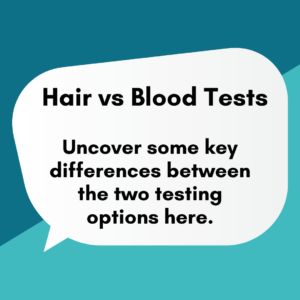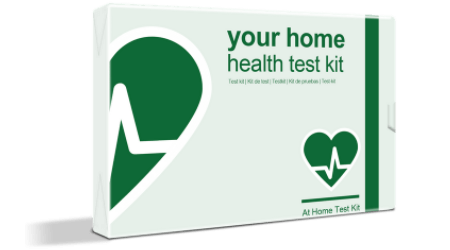Heard of allergy and sensitivity testing? It’s the gold standard for diagnosing allergies or food sensitivities from the comfort of your home. When selecting the right test, you’ll encounter two main options: hair tests and blood tests.
We often receive questions about the differences between these two methods. It’s important to note that each test serves a distinct purpose. Hair samples are used for bioresonance testing to identify food sensitivities, while blood samples are utilised for allergy testing.
But what’s the difference between these two options? Why do we take different samples for different conditions? And which option should you choose? Let’s find out.
Understanding Hair and Blood Testing
Allergies and Sensitivities
To understand the difference between hair vs. blood tests, you need to appreciate the difference between allergies and food sensitivities.
Allergies involve an acute immune system reaction due to the presence of an otherwise harmless substance. The allergen is wrongly flagged as a threat, triggering an immune defence. Your immune system floods the body with histamine, causing symptoms such as rashes, itchiness, and swelling.
Food sensitivities, on the other hand, develop over hours or days, causing systemic symptoms like brain fog, rashes, bloating, and bowel changes. However, it still involves the immune system – although the underlying mechanism isn’t well understood.
How the Tests Work
Food Sensitivity Tests are categorised as complementary and alternative medicine (CAM). It analyses the bioresonance of a small hair sample using MARS III (Multiple Analytical Resonance Systems) machines, comparing the bioresonance signature to other compounds. The closer the signature, the more likely a person has a sensitivity.
Allergy Tests look for IgE antibodies, which are produced for a specific trigger. Using ELISA testing, if the IgE antibody is present, it indicates a high likelihood that you have an allergy to the trigger in question. It is a medically validated diagnostic method used alongside IgG food intolerance testing.
Hair vs Blood Tests: Pros and Cons
Struggling to decide between the two options? Usually, you’ll pick one test over the other based on whether you think you’ve got an allergy or food sensitivities. That being said, there are some key differences between the two testing options. Here’s a breakdown of hair vs. blood testing:
| Pros | Cons |
| Hair Testing (Food Sensitivities) | |
| Easy to collect, non-invasive | Less scientifically validated reliability |
| Simple and painless | Controversial accuracy |
| Can detect a broad range of sensitivities | May include false positives |
| Generally less expensive | Not universally accepted in the medical community |
| Usually faster turnaround time | Might not be covered by insurance |
| Non-invasive and stress-free | |
| Blood Testing (Allergies) | |
| Accurate and specific | Requires needle and blood draw |
| Well-established and scientifically validated | Can be uncomfortable or distressing |
| Highly specific to certain allergens | Limited to IgE-mediated allergies |
| Often covered by insurance | Generally more expensive |
| Reliable and trusted by medical professionals | Longer waiting period for results |
| Accurate identification of common allergens | May not detect non-IgE mediated sensitivities |
Remember, you should pick the test that’s right for you. If you’re still unsure about the tests, speak to our customer service team. We’re more than happy to answer your questions helping you make an informed decision.
Hair vs. Blood Tests: When to Choose Each Test
Okay. You now know the fundamentals of hair vs. blood testing. But when should you pick one over the other? Let’s consider some potential scenarios:
- Scenario 1. During the summer, you find yourself continually sniffling throughout the day. Your eyes are sore and watery. However, the symptoms subside slightly when you go inside or after taking a shower. You could have hay fever – an allergic reaction to pollen. You should take an allergy test.
- Scenario 2. You feel continually lethargic every day with difficulty concentrating. Despite your symptoms, you sleep well every night, get plenty of exercise, and eat healthily. You should take a food sensitivity test alongside an elimination diet.
- Scenario 3. After eating a meal containing peanuts, you experience itching in your mouth and throat, swelling of your lips, and difficulty breathing. Your symptoms escalate rapidly, leading to severe hives and a drop in blood pressure. These symptoms are indicative of a severe peanut allergy, which can be life-threatening. You should immediately seek medical attention and consider taking a blood allergy test to confirm your peanut allergy.
- Scenario 4. Several hours after eating a meal, you feel bloating, nausea, and diarrhoea. Later on, you develop brain fog or a mild rash. The symptoms persist for several hours. However, after eliminating certain foods from your diet, you can’t identify the culprit. The likely answer is a food sensitivity. Take a hair sensitivity test to narrow down your search.
The biggest indicator of which test to take is the timeline. Immediate, acute reactions usually involve an allergy compared to the longer, chronic response for food sensitivities.
It’s Time to Get Tested
Does all of this sound worryingly familiar? You should get tested. Here at Allergy Test Ireland, we provide industry-leading tests for allergies and sensitivities.
Allergy & Intolerance Test Plus. This test kit looks for 117 common triggers, including 38 common food and environmental allergens. It analyses a small blood sample for IgE antibodies, providing reliable results.
Sensitivity Test Plus. Our most comprehensive sensitivity test analyses your hair sample for 975 items, including foods, environmental factors, metals, and more. Perfect for people experiencing IBS, bloating, headache, fatigue, and other similar symptoms.
Get tested today and take back control of your health. Speak to our team for further details.


